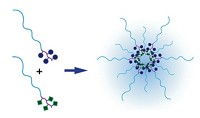Advertisement
Grab your lab coat. Let's get started
Welcome!
Welcome!
Create an account below to get 6 C&EN articles per month, receive newsletters and more - all free.
It seems this is your first time logging in online. Please enter the following information to continue.
As an ACS member you automatically get access to this site. All we need is few more details to create your reading experience.
Not you? Sign in with a different account.
Not you? Sign in with a different account.
ERROR 1
ERROR 1
ERROR 2
ERROR 2
ERROR 2
ERROR 2
ERROR 2
Password and Confirm password must match.
If you have an ACS member number, please enter it here so we can link this account to your membership. (optional)
ERROR 2
ACS values your privacy. By submitting your information, you are gaining access to C&EN and subscribing to our weekly newsletter. We use the information you provide to make your reading experience better, and we will never sell your data to third party members.
Synthesis
Survival Of The Weakest
Catalyst Discovery: Least stable intermediates can lead to the best catalysts
by Stu Borman
April 5, 2010
| A version of this story appeared in
Volume 88, Issue 14

Evolution may be based on “survival of the fittest,” but when it comes to selecting the best catalysts, that dictum doesn’t always hold.
A research team has shown that one can select the best catalysts from combinatorial libraries of candidates by instead using the principle of “survival of the weakest”—that is, the most unstable catalytic intermediates make for the best catalysts. The approach could make it possible to discover catalysts more quickly for syntheses of drugs and other products.
It has been difficult to find selection methods to separate the cream of the crop (the fastest catalysts) from the dross when screening libraries to identify highly active catalysts. Now, theoretical chemist F. Matthias Bickelhaupt of Free University of Amsterdam, catalysis specialist Joost N. H. Reek of the University of Amsterdam, and coworkers have developed an innovative selection strategy for such experiments based on survival of the weakest intermediates (Nat. Chem., DOI: 10.1038/nchem.614).
The researchers mix limited amounts of palladium—bound to the substrate of an allylic alkylation reaction—with an overabundance of several organic ligands. In the equilibrium mixture, different ligands bind to Pd, forming catalysts that vary in their ability to accelerate alkylation of the substrate. The ligands that form the most stable Pd-ligand-substrate complexes are most abundant in solution, and those that form unstable complexes are scarce.

Using electrospray mass spectrometry (ESI/MS) to determine the least abundant and therefore least stable complexes, the researchers identified ligands that form the most active catalysts. The study thus evaluates catalysts not in the conventional way—by determining their ability to lower the activation barrier, the energy required to make the reaction go—but instead by finding the least stable intermediates, which are closer energetically to the top of the barrier and can therefore more easily traverse it.
The work “highlights the value of smart combinatorial approaches for the development of highly efficient catalysts,” says catalysis specialist Helma Wennemers of the University of Basel, in Switzerland.
“This is a clever demonstration of successful catalyst screening using simple ESI/MS methodology,” says polymer chemist Krzysztof Matyjaszewski of Carnegie Mellon University.
Groups such as Matyjaszewski’s and that of catalyst screening specialist Andreas Pfaltz of the University of Basel have identified good catalysts from mixtures before. But the new study represents one of the first screening examples in which “catalyst systems are in equilibrium and communicate,” Reek says. “It’s a Darwinian selection in which the weakest survive, whereas most others have monitored the properties of mixtures of catalysts that are not communicating.”
Dynamic combinatorial chemistry expert Sijbren Otto of the University of Groningen, in the Netherlands, says, “We understand initial states much better than transition states,” which are transient species at the tops of activation barriers. Manipulating the energies of reactant intermediates “may, for selected systems, be a much easier way to find catalysts than attempting to interact selectively with much more elusive transition states,” Otto says.
Using the new technique to detect least abundant species in large libraries and screen substantially different ligand classes in the same mixture, however, could be difficult, Otto adds. Nevertheless, he says, “the approach holds considerable promise for catalyst development and discovery.”





Join the conversation
Contact the reporter
Submit a Letter to the Editor for publication
Engage with us on Twitter